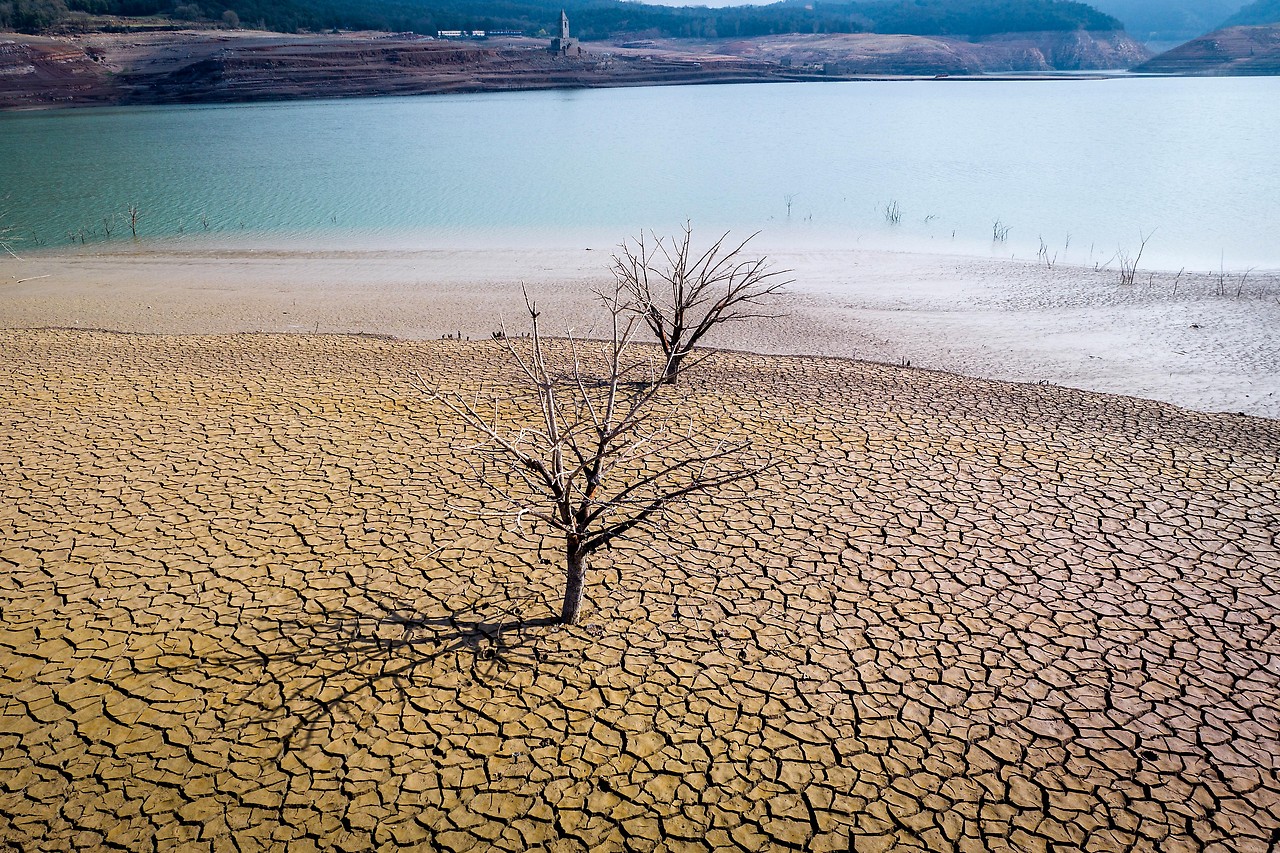On Monday, the United Nations Intergovernmental Panel on Climate Change (IPCC) warned of an escalation of the climate crisis. With every further step of global warming, the changes at the extremes would increase, it said. Continued warming is projected to affect the hydrological cycle, including its variability. This means that global monsoon precipitation as well as very wet and very dry weather and climate events and seasons continued to intensify.
Some areas are already suffering from water shortages, while other areas are suffering from flooding. In many places the water is contaminated. Governments, the private sector and civil society organizations will therefore discuss solutions to the worsening global water problems in New York from Wednesday. UN Secretary-General Antonio Guterres wants the summit to draw up an ambitious program with concrete proposals for action by Friday.
“Anomalies” fuel further progress
In any case, there is no lack of topicality. Because according to a report by the EU Commission, the dry and warm winter led to droughts in southern and western Europe. This is noticeable, for example, in the low water levels of rivers and lakes or the soil moisture. In Italy, Spain and France in particular, this is accompanied by concerns about water supply, energy production and agriculture, according to the report on the drought in March.
Because it has snowed significantly less than average in the Alps, the snowmelt, which otherwise causes the rivers to swell, will be significantly lower. According to the information, the southern and eastern Mediterranean region will also be warmer and drier than usual. Meanwhile, the consequences are not yet serious, but the situation could become critical if the “anomalies” continue in the spring.
Aid package in Italy, emergency plan in France
In view of the extreme drought in Italy, the government in Rome announced a 7.8 billion euro aid package. Environment Minister Gilberto Pichetto Fratin said the cabinet will shortly deal with the decree on the distribution and use of the funds. The water supply for households and companies, especially in agriculture, will have priority in the coming months.
The situation is particularly critical in Lombardy. The region is facing severe drought like in 2022. Water resources show a deficit of 60 percent compared to the average values for this period. Last year, the deficit was 57 percent on the same days. “If there is no rain in April and May, we expect an emergency situation similar to that in 2022,” said Massimo Sertori, a member of the Lombardy regional parliament.
In France, last summer’s drought and extreme winter drought caused groundwater reserves to shrink. Because there is a lack of precipitation worth mentioning, it could not be filled up, as is usually the case in autumn and winter. The government wants to present a national water plan, which is expected to contain restrictions on water consumption. There is already a water shortage in six departments.
Spain in “long-term drought”
The drought in northern Spain has reached “extraordinary” proportions, according to the weather service Aemet. With parts of Spain also suffering from low rainfall in autumn and winter, the popular holiday destination has entered a “prolonged drought” and is likely to face another year of heat waves and wildfires. In the first three months of 2023, according to Aemet, there were no significant signs that the situation was changing.
In Catalonia, the situation is described as critical. According to the authorities, the water level of the Sau reservoir in Catalonia is only nine percent of the total capacity. The average water reserve in the north of the country with the metropolis of Barcelona is reportedly just 27 percent.
Therefore, water consumption in agriculture and industry is already limited. Only trees may be watered in parks and gardens. If there is no further rain, the head of the regional water authority, Samuel Reyes, expects restrictions on private drinking water consumption from autumn.
Groundwater problem also in Austria
Austria has also been struggling with the lack of precipitation so far. In the Greater Vienna area, it rained 98 percent less this March than in normal years. In the meantime, this is no longer an isolated case, as Geosphere Austria (formerly ZAMG) knows that March has always had particularly low precipitation in recent years. In the past 14 years, March has always brought below-average amounts of rain – more on this in noe.ORF.at.
A study by the EU project G3P recently confirmed that Austria, like almost the whole of Europe, suffers from a groundwater problem. Historically low levels were registered at 34 of 218 measuring stations where a value is available for March, and 96 other points were “low” on the hydrographic service’s five-point scale. Last summer was characterized by periods of drought, triggered by heat waves and little rain – the dry soil of the arable land required even more groundwater as a result.
Low water level in Lake Neusiedl
Since records began, Lake Neusiedl in Burgenland has never had as little water as it does now. Compared to the exceptional year 2022, the level has dropped by 20 centimeters.
Austria would have sufficient water of excellent quality, but the groundwater levels in eastern Austria fell this year to the lowest values since measurements began, and the water levels in some local lakes would make the drought visible, the Ministry of Agriculture recently reported. Climate change suggests that periods of drought could increase. Agriculture Minister Norbert Totschnig (ÖVP) had announced a precautionary and emergency plan for a safe drinking water supply.
The study “Fundamentals for Sustainable Use of Groundwater” commissioned by the Ministry in 2021 already showed that Austria’s groundwater resources could have been reduced by around 23 percent in just over a quarter of a century, “that means a decrease of 5,100 million .cubic meters to 3,900 million cubic meters. Regionally, however, declines of more than 30 percent are also possible”.





